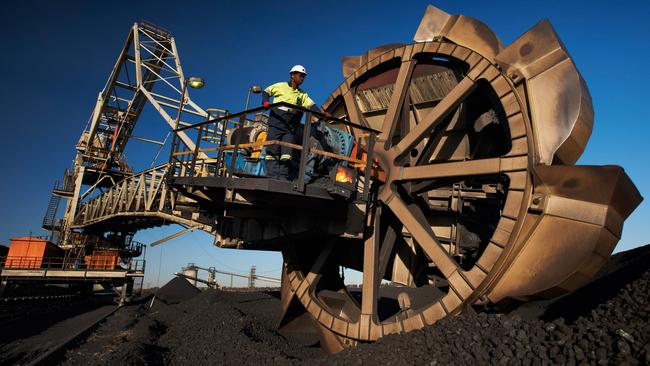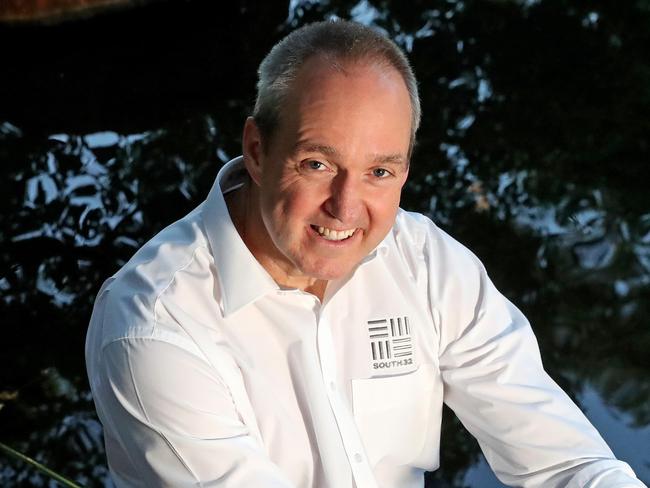South32 says it wants to halve carbon emissions by 2035 after exiting thermal coal
South32 has set medium-term carbon reduction targets for the first time, a day after closing the deal to exit thermal coal.

Investor pressure to decarbonise the resource industry is flowing through to the second tier of Australia’s mining majors, with South32 setting medium term carbon reduction targets for the first time, and gold major Newcrest agreeing to sign on to the goal of net zero emissions by 2050.
Institutional pressure has already forced the world’s biggest miners – including Rio Tinto, BHP, Vale and Glencore – into speeding up moves to cut carbon emissions at their own operations, and begin moves to pressuring their own customers to also cut their carbon profile.
That same pressure is flowing through to decisions at the next tier of mining houses. In March iron ore giant Fortescue Metals Group outlined an ambitious plan to neutralise the carbon emissions from its own operations by 2030, 20 years ahead of its heavyweight peer.
On Tuesday South32 announced plans to halve emissions attributable to its own operations, a day after closing the deal to exit thermal coal production, with Newcrest extending its own medium term goals to include a promise to achieve net zero emissions by 2050.
South32 boss Graham Kerr announced the new targets on Tuesday, saying the mining major would look to introduce renewable energy options at its most carbon intensive operations – including its Hillside aluminium smelters in South Africa, and the Worsley alumina hub in Western Australia, both powered by coal generators – in a bid to slash its total emissions by 2035.
Along with fugitive carbon emissions from its underground metallurgical coal mines in NSW, and carbon produced by its hydro-powered Mozal aluminium smelter, about 90 per cent of South32’s 23.3 million tonnes of annual carbon equivalent emissions – its total scope 1 and 2 emissions – come from just four of its operations.
But the company’s efforts to decarbonise its alumina and aluminium operations will be more complex that simply moving to renewable power sources.
While the major problem on WA’s integrated grid in the south west of the state is not lack of energy supply, but a lack of baseload users during the heat of summer when the plethora of household solar installations kick in, dramatically reducing demand on the system, Mr Kerr said shutting down South32’s coal-fired generator at Worsley and moving to the grid was not a realistic option for the company.
South32 also needs the steam produced from thermal generators – coal and gas – as part of the industrial process to turn bauxite into alumina.
Mr Kerr told The Australian on Tuesday the company would first look to convert its coal-fired station at Worsley to use gas, as a “transition” measure, but even that was a medium term solution and was unlikely to happen until later this decade.
“Things like gas obviously allow you to still do both with the turbine, and potentially hydrogen would as well as a long term option,” he said.
Mr Kerr said South32 would look to smaller energy efficiency measures at Worsley in the short term, with the company hoping to get carbon emissions from its WA alumina assets down to the levels of Alcoa, its main rival in the industry in the region.
The South32 boss told analysts the situation at its Hillside aluminium plant in South Africa – worth 53 per cent of the company’s global carbon equivalent output – was also complicated. It is largely powered by South Africa’s energy grid, which relies heavily on coal-fired power.
Mr Kerr said South32 was also looking at energy efficiency measures at Hillside, and was talking to South African public energy utility Eskom about measures it was taking to introduce more renewable power into the grid.
South32 announced on Monday the sale of its South Africa thermal coal operations has effectively closed, though the formal transfer of ownership won’t be finalised until June 1.
South32 had previously only set short-term emission reduction targets internally, but had said it’s long term goal was for net zero emissions by 2050.
The divestment of its South African thermal coal operations has also increased South32’s balance sheet flexibility, the company said, flagging a $US200m extension to its share buyback and other capital management programs.
On Tuesday gold major Newcrest signed on to the push for net zero emissions by 2050, adding to promises made in mid-2019 it would cut carbon attributable to its own operations by 30 per cent by 2030.
South32 shares were up 7.5c, or 2.5 per cent, to $3.035 at 1500 AEST on Tuesday, with Newcrest up 45c to $28.80.



To join the conversation, please log in. Don't have an account? Register
Join the conversation, you are commenting as Logout